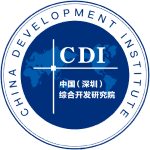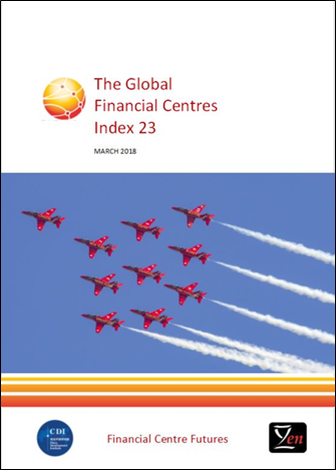Authors
Mark Yeandle
Published by
Long Finance & Financial Centre Futures (March 2018), 48 pages. Produced by Z/Yen in Partnership with CDI.
Share on social media:


You might also be interested in:
The Global Financial Centres Index 23
March 2018 saw publication of the twenty-third edition of the Global Financial Centres Index (GFCI 23). GFCI 23 provides evaluations of future competitiveness and rankings for 96 major financial centres around the world. GFCI serves as a valuable reference for policy and investment decision-makers.
China Development Institute (CDI) in Shenzhen and Z/Yen Partners in London collaborate in producing the GFCI. The GFCI is updated and published every March and September, and receives considerable attention from the global financial community.
110 financial centres were researched for GFCI 23. The index is compiled using 103 instrumental factors. These quantitative measures are provided by third parties including the World Bank, the Economist Intelligence Unit, the OECD and the United Nations.
The instrumental factors are combined with financial centre assessments provided by respondents to the GFCI online questionnaire (www.globalfinancialcentres.net). GFCI 23 uses 28,599 assessments from 2,340 respondents.
The Headlines of GFCI 23 include:
- There is an overall increase in confidence for the leading centres. Signs of a bias towards stronger and more established centres are evident with the top 25 centres all rising in the ratings. Ratings fell for all of the lowest 50 centres.
- London and New York remain at the top of the rankings and the gap between them in ratings closed to one point on a scale of 1,000. Hong Kong retains third place. London’s rating rose less than the other four top centres. There is now less than 50 points between the top five centres. San Francisco and Shenzhen moved into the top ten, replacing Beijing and Zurich.
- Western European financial centres remain volatile. The top five centres rose in the ratings. Most of the lower placed centres lost ground. Hamburg, Munich, Monaco, and Madrid, rose strongly in the ranks, with other improvements for Paris, Jersey, Edinburgh and Lisbon. Hamburg in particular rose 38 places in the ranks.
- In the Asia/Pacific region, the leading centres improved their ratings and Shenzhen moved into the top ten centres. There were also significant rises in the ranks for Qingdao, Bangkok, Kuala Lumpur and Busan. Tianjin and New Delhi are new entrants to the GFCI.
- North American centres generally achieved improved ratings and improved their ranks accordingly. This was a reversal from GFCI 22. The exception was Washington DC, which dropped 20 places in the rankings. Montreal also dropped by one place (although its rating was 22 higher than in GFCI 22).
- All centres in the Eastern Europe and Central Asia suffered a fall in their ratings. However, Cyprus, Istanbul and Moscow rose in the ranks. Tallinn and Riga both fell over 30 places in the ranks. Astana and Baku are new entrants to the GFCI.
- In the Middle East and Africa, only Dubai and Abu Dhabi increased their ratings. Mauritius, Riyadh, and Casablanca improved their ranking despite falls in their ratings.
- All centres in Latin America and the Caribbean fell in the GFCI ratings except for the Cayman Islands. Despite the fall in the ratings, six centres rose in the ranks with the Bahamas leading the way rising 22 places. The Cayman Islands are now the leading centre in the region.
- European ‘island’ centres fell back after rising in GFCI 22. The British Crown Dependencies of Jersey, Guernsey, and the Isle of Man all fell in the ratings.




